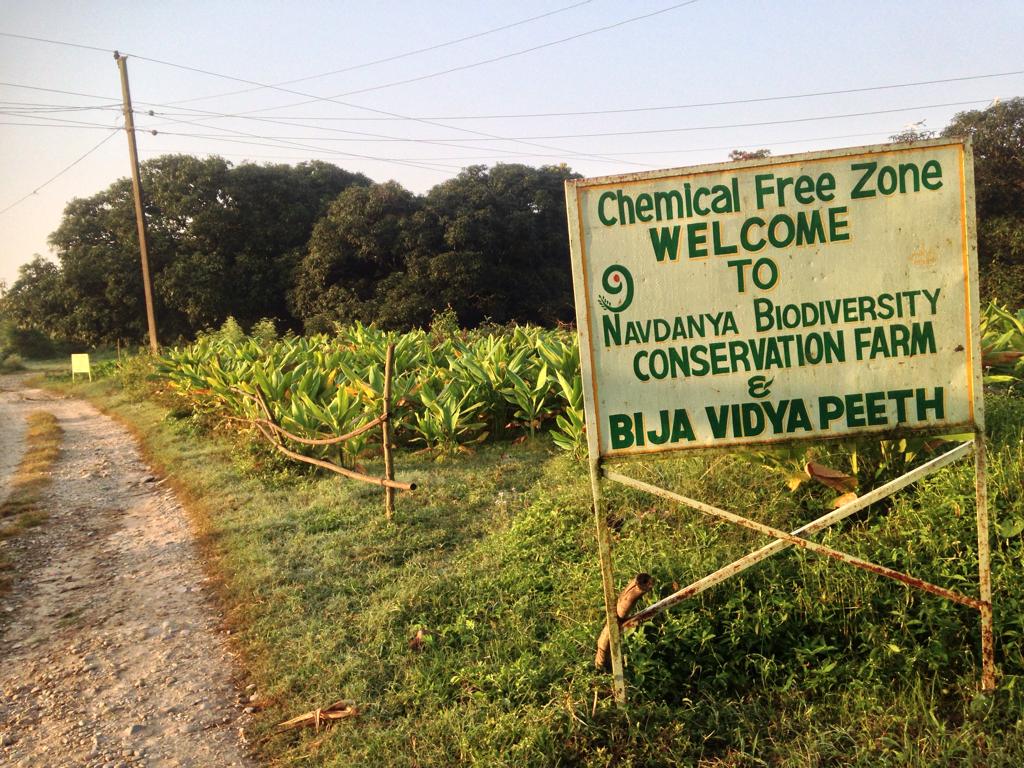
By Manlio Masucci (text and photos) – Navdanya International, 17 March 2020
From India to the rest of the world, corporations are trying to extend control over the first link of our food chain. Navdanya seed banks were created to protect biodiversity threatened by high chemical input monocultures promoted by the Green Revolution.
It’s probably the most important place on the farm, as everything, indeed, comes from there. From the seeds, and the need to protect them, care for them, preserve them and make them freely available to the farmers. Navdanya’s seed bank stands at the end of the cultivated fields of the Dehradun farm, on the bottom slopes of the Himalayas. A place restored to biodiversity, which preserves thousands of years of rural wisdom. Corporations, whose goal is to take control of seeds, are not far away, just beyond its fences. Thousands, if not millions, of plant varieties have disappeared in the last few decades following the launch of the Green Revolution, while more and more farmers are dependent on seeds protected by intellectual property rights. And the threat continues as the appropriation strategies of multinationals continue to be refined.
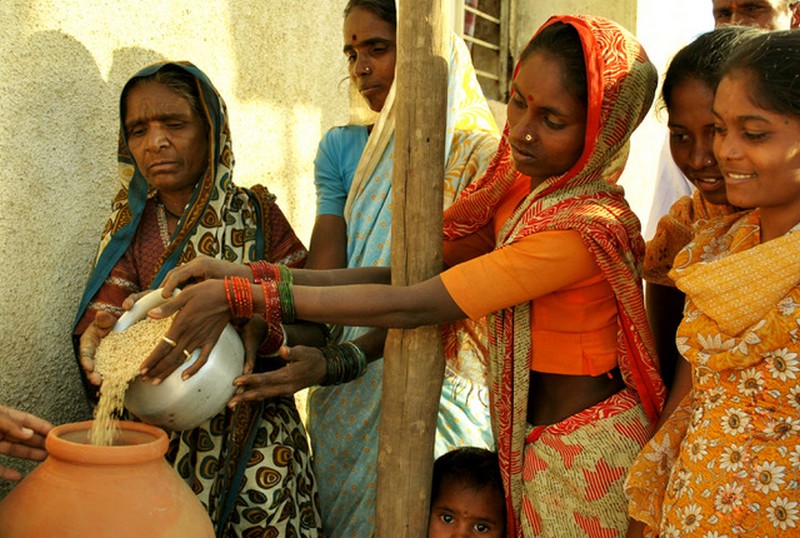
The centre for the conservation of biodiversity in Dehradun is also a symbolic place of resistance, able to reproduce itself throughout India: there are more than one hundred seed banks that Navdanya has helped to open, throughout the country. But India is only one of the most obvious examples of the ongoing global war between multinationals, and small and medium-sized agro-ecological farms. Throughout the world, corporations are in fact on the warpath to take more and more market shares. Starting, not surprisingly, with seeds, the first link in the food chain. An offensive justified by the concern of not being able to continue with business as usual. The big agribusiness companies, despite the huge economic power and influence they hold, are in fact losing ground on many fronts: on that of consumers’ trust which, in spite of the great subsidies to the conventional, continues to turn dangerously towards organic; on that of independent science, which continues to enumerate the risks of junk food to human health; on that of economists, who denounce how the hidden costs of large industrial production inevitably falls on communities; and on that of climate change, with climatologists pointing to industrial agriculture as one of the main causes of global warming.
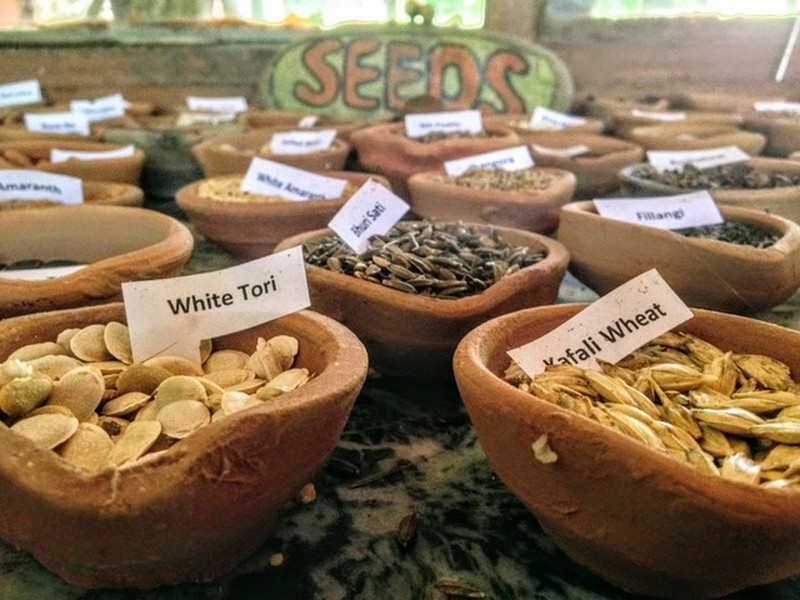
The transition is therefore wide and growing, but bodies and institutions still seem to be anchored to old production models, in spite of their failure. This has also been demonstrated and certified by the United Nations, as well as through the initiatives of many local governments, who are ready to reclaim the food sovereignty which was lost to the global market network. The way in which we produce, distribute and consume food, starting with the seeds from which everything originates, also then becomes a question of democratic rights to health and food sovereignty, and the principles of subsidiarity and precaution. And precisely from a seed, emphasizes the founder of Navdanya, Vandana Shiva, democracy grows from the bottom up, like every living thing.
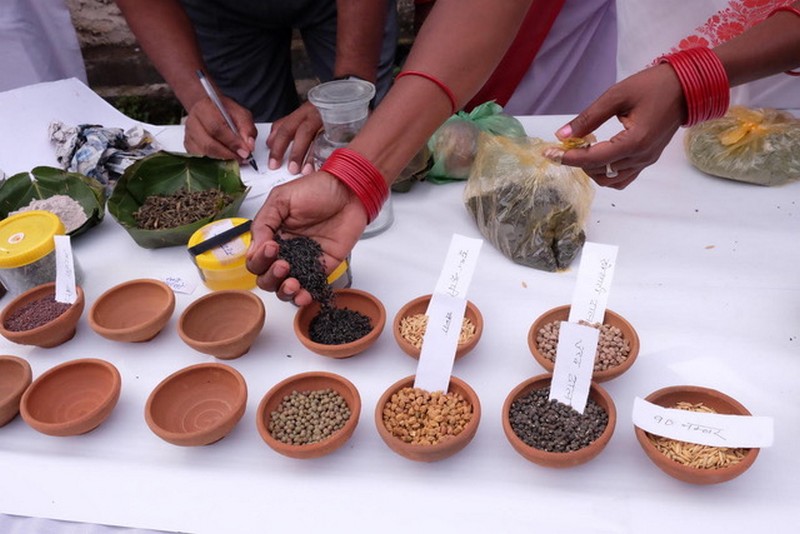
Uniformity and monopoly: the show must go on
Ensuring seed control and imposing the mantra of uniformity to facilitate the expansion of intensive monocultures is the main strategy of the world’s large seed conglomerates. Achieving the objective of turnover growth cannot, by nature of the corporations themselves, be hindered by ancillary environmental or social considerations. The principle of uniformity, necessary for the success of the agro-industrial model of monocultures, however, comes into immediate conflict with the principles of biodiversity. The results of which are there for all to see. Even those of international bodies such as the FAO, which recently certified both the failure of the Green Revolution, and the biodiversity emergency on our planet, with 75% of plant genetic diversity disappearing in just one hundred years. From the original ten thousand species, we now grown just over 150 and the vast majority of mankind feeds on no more than twelve plant species. This is coupled with a consequent loss of nutrients in the food we consume.
The principle of uniformity, applied in the breeding of the seeds that generate our food, has an impact not only on the health of the planet, but also on the health of human beings, as pointed out by the geneticist Salvatore Ceccarelli, in the Manifesto Food for Health. The diversity of our diet is in fact very important for our health. “And here the problems begin. How can we have a diversified diet if 60% of our calories come from just three crops, namely wheat, rice and maize? And how do we diversify our food if almost all the food we eat is produced from varieties that, to be legally marketed – for their products to be legally found in supermarkets – must be registered in a catalogue called a varietal register, and that to be registered they should be uniform, stable and distinct? If our health depends on the diversity and composition of the microbiome, which in turn depends on the diversity of the diet, how can we have a diversified diet if the agriculture that produces our food is based on uniformity?”
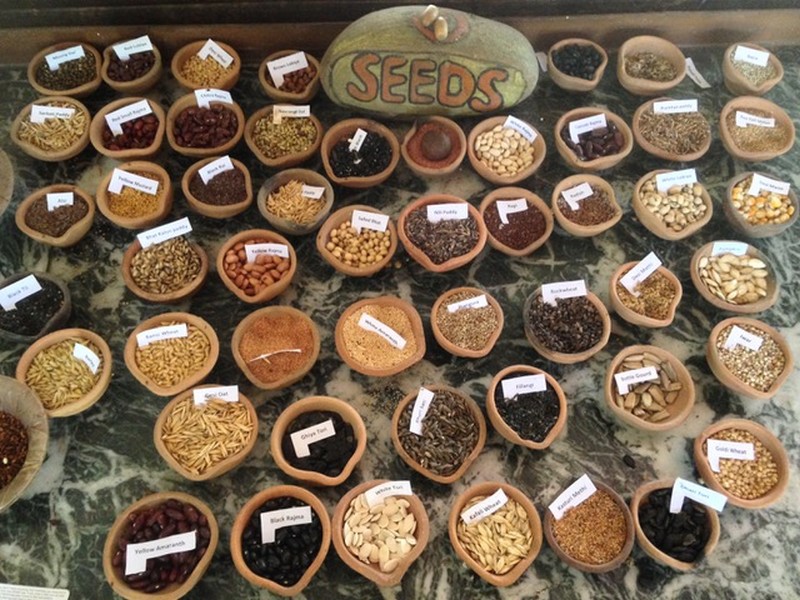
Questions to which the answer seems obvious, considering that it is precisely modern breeding methods that have contributed to the decrease in the number of crops, contributed to the decrease of the number of crops with only about 30 plant species supplying 95% of the global demand for food and with the four biggest staple crops (wheat, rice, maize and potato) taking the lion’s share. A vicious cycle is artfully triggered as less biodiversity means a hindering of the ecological functions of renewing soil fertility, and controlling pests and weeds, leading to a higher dependence on chemicals. The monoculture, typical of industrial agriculture, is strictly connected with the use of an increasing need of agro-chemicals, especially fertilisers and pesticides.
It is then easy to understand why the multinationals in this sector are so interested in imposing their intellectual property rights on farmers, getting rid of all those traditional varieties that do not represent, from their point of view, the value of biodiversity, but rather an inconvenient competitor in the market.
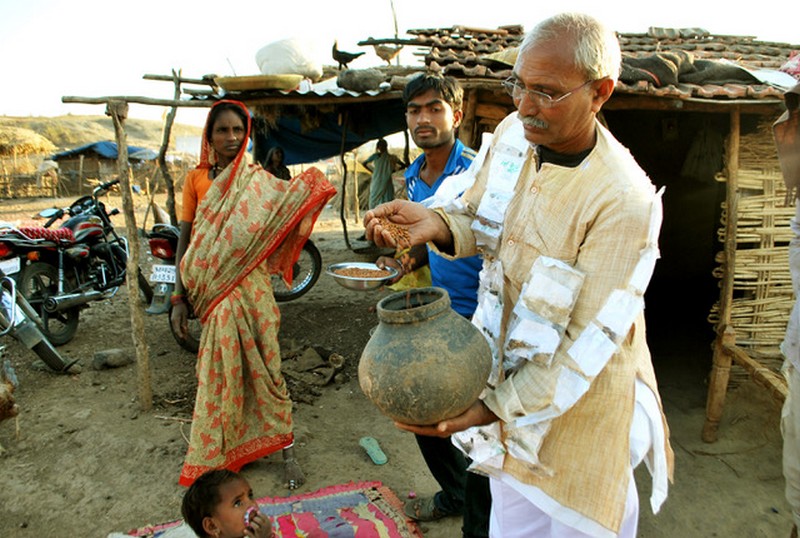
According to FAO, the greatest contribution to biodiversity loss is caused by industrial agriculture, deforestation and other excesses of the globalized, industrialized food system, which, in turn, also contribute to climate change. As a result, the FAO has expressly rejected the dictates of the Green Revolution, calling for a new impetus to agroecological practices. It is now established, in fact, that small farmers are proportionally more productive than large industrial companies, with a production equivalent to 70% of the world’s food, while the allegedly higher yield of industrial agriculture requires ten times more inputs in terms of energy compared to what it subsequently produces in terms of food. The United Nations General Assembly itself has declared that the decade between 2021 and 2030 must be dedicated to the regeneration of ecosystems and has issued a call for global action.
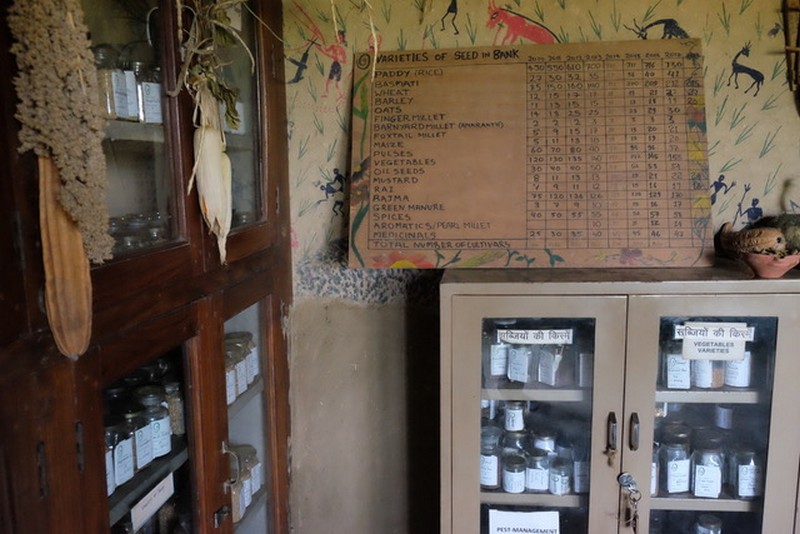
However, multinationals do not seem interested in following such appeals. On the contrary, the race for resources and the creation of monopolies seems unwilling to stop. In 2016, 55% of the world seed market, worth billions of dollars, was in the hands of five large multinationals (compared to 10% in 1985), some of which simultaneously control another multi-billion dollar market, that of pesticides. Recent mergers have further aggravated the picture. Syngenta and ChemChina merged for $43 billion, Dow Chemical (formerly Union Carbide, responsible for the Bhopal industrial disaster in which over 20,000 people lost their lives) merged with Dupont for $122 billion to form Corteva, while Bayer acquired Monsanto for $66 billion. To date, four companies control more than 60% of the global seed market and 70% of the agrochemicals and pesticides market. This concentration is historically unprecedented and inhibits the emergence of sustainable alternative agricultural models, diversified seed supply and trade systems. The Seed Freedom campaign was launched by Navdanya precisely with the aim of countering the overwhelming power of multinationals by creating an international alliance for the defence of the right to preserve and freely exchange open pollinated, non-GMO seeds.
–
Conserving, protecting and breeding
Entering the seed bank of Navdanya is like entering a place of resistance and political action. It is the farmers themselves, who master seed saving, and who proudly show the result of their daily battles.
Battles which continue on to this day, not only as a response to the attacks of corporations who wipe out such well-preserved traditional practices by taking farmers’ resources, but also as a way to show an existing and viable alternative for a fair and sustainable future.
The Navdanya Biodiversity Conservation Farm was founded in 1995 with the aim of preserving biodiversity and teaching agroecological practices to students and farmers from all over the world. Over the last 30 years Navdanya’s research in the field of ecological and biodiverse agriculture has shown that agroecology can improve nutrition and health, increase small farmers’ income and, at the same time, regenerate the soil, water and biodiversity, thus improving climate resilience. Navdanya’s training programmes have reached more than five million farmers, at least one million of whom are actually practicing organic farming, while 124 community seed banks have been implemented throughout India. These centres enable farmers to free themselves from the dependency of having to buy expensive, unreliable and nutritionally empty commercial seeds, while providing support in the conservation of climate resilient varieties.
–
It is, in all respects, a path of resistance and reclamation, which has been taken in response to the rise of corporations that have made India one of their chosen lands of conquest. Reconquering food sovereignty through the regeneration of biodiversity is the first step in tackling the devastation caused by the advent of intensive monocultures. To understand the impact of the Green Revolution on India’s biodiversity, it is enough to analyse what happened to one of the continent’s primary crops, rice. Over 200,000 varieties of rice have almost completely disappeared. A proper massacre of varieties which occurred in the name of uniformity, which allowed corporations to extend almost complete control over the market. Navdanya has managed to save about 4,000 varieties of rice throughout India, 1,500 of which are conserved in the seed bank in Dehradun.
From this point of view, India represents one of the favourite areas, on a global level, for agribusiness Resistance against so called ‘biopiracy attacks’ have been ongoing in this part of the world for the last twenty-five years. Ever since Vandana Shiva challenged and defeated in international courts, powerful corporations’ attempt to patent the traditional Neem plant.
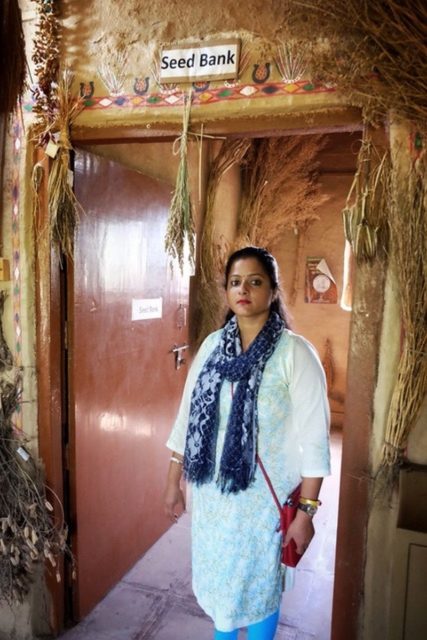 This battle was won as part of a permanent, ongoing war. In 1998, Navdanya managed to stop Rice Tec’s attempt to obtain a patent on the famous basmati rice while, in 2004, it was Monsanto’s turn to revoke the patent on a variety of Indian rice called Nap Hal.
This battle was won as part of a permanent, ongoing war. In 1998, Navdanya managed to stop Rice Tec’s attempt to obtain a patent on the famous basmati rice while, in 2004, it was Monsanto’s turn to revoke the patent on a variety of Indian rice called Nap Hal.
These are important victories, although they cannot be considered final. Vigilance must remain high, as demonstrated by the recent case of Bt transgenic eggplants, for which cultivation in India has been blocked by a moratorium. The strategy being pursued by corporations is to elude the law by supplying farmers with illegal seed and promoting illegal sowing campaigns. The aim is to create new monopolies like that of cotton, a market which is firmly in Monsanto’s hands. Over 90% of Indian cotton, the second largest producer in the world, is Bt cotton. The lives of about 60 million people, including 4.5 million farmers, are linked to the production and trade of cotton controlled by the company recently acquired by Bayer.
The new frontier of corporations, or their new land of conquest, is that of climate resilient seeds. These are crops that are resistant to drought, flood and salt as a result of farmers’ collective breeding and innovation. The biotechnology industry, for its fictious part, claims the supremacy of genetic engineering over resilient crops. This is a multi-billion-dollar business at a time when extreme events are becoming more and more frequent: there are over 1500 patents held by corporations on resilient varieties, as the president of Navdanya once again reports. “The agrochemical and biotech industry,” writes Vandana Shiva, “is using the climate-resilient varieties developed by farmers by mapping their genomes and then claiming the traits originally selected by farmers as its own patent-protected inventions. This is not genetic selection, this is piracy, or rather biopiracy”.
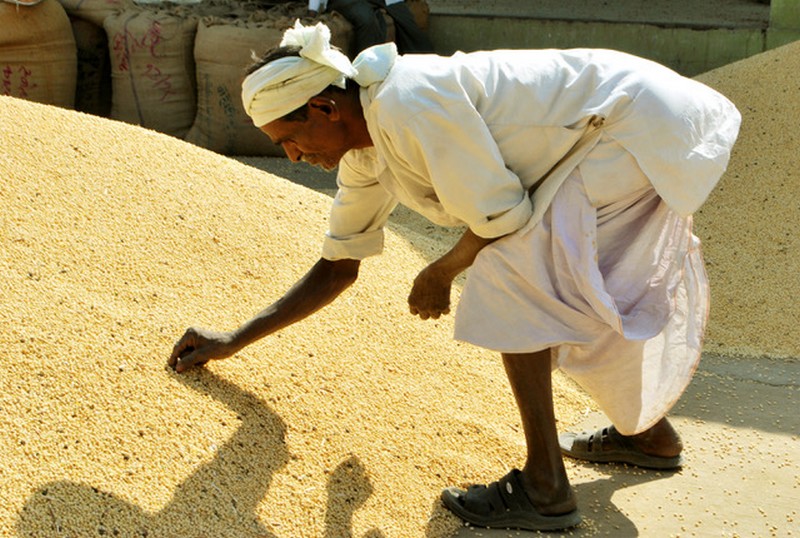
The conservation of farmer bred varieties is, therefore, of primary importance. For many communities that cannot afford to purchase corporate patented seeds annually, being able to access freely distributed, resilient varieties can make the difference between life and death. The seed, on which our entire food chain depends, has never been so at risk. With greedy multinationals continued attempt to take seeds out of the public domain in order to further extend their control over our food.
Therefore protecting, preserving and freely distributing seeds becomes a matter of survival and freedom that concerns everyone on the planet. As Vandana Shiva points out: “Saving and breeding local seeds has become a political, social, economic, ecological, health and scientific imperative. Only in this way farmers can secure their livelihoods, while consumers can be assured of nutritional security, as well as food of good taste and quality”.
The original article was first published in Italian in Terra Nuova magazine, February 2020
Translation kindly provided by Arianna Porrone and the Navdanya International Team, revision by Carla Ramos
